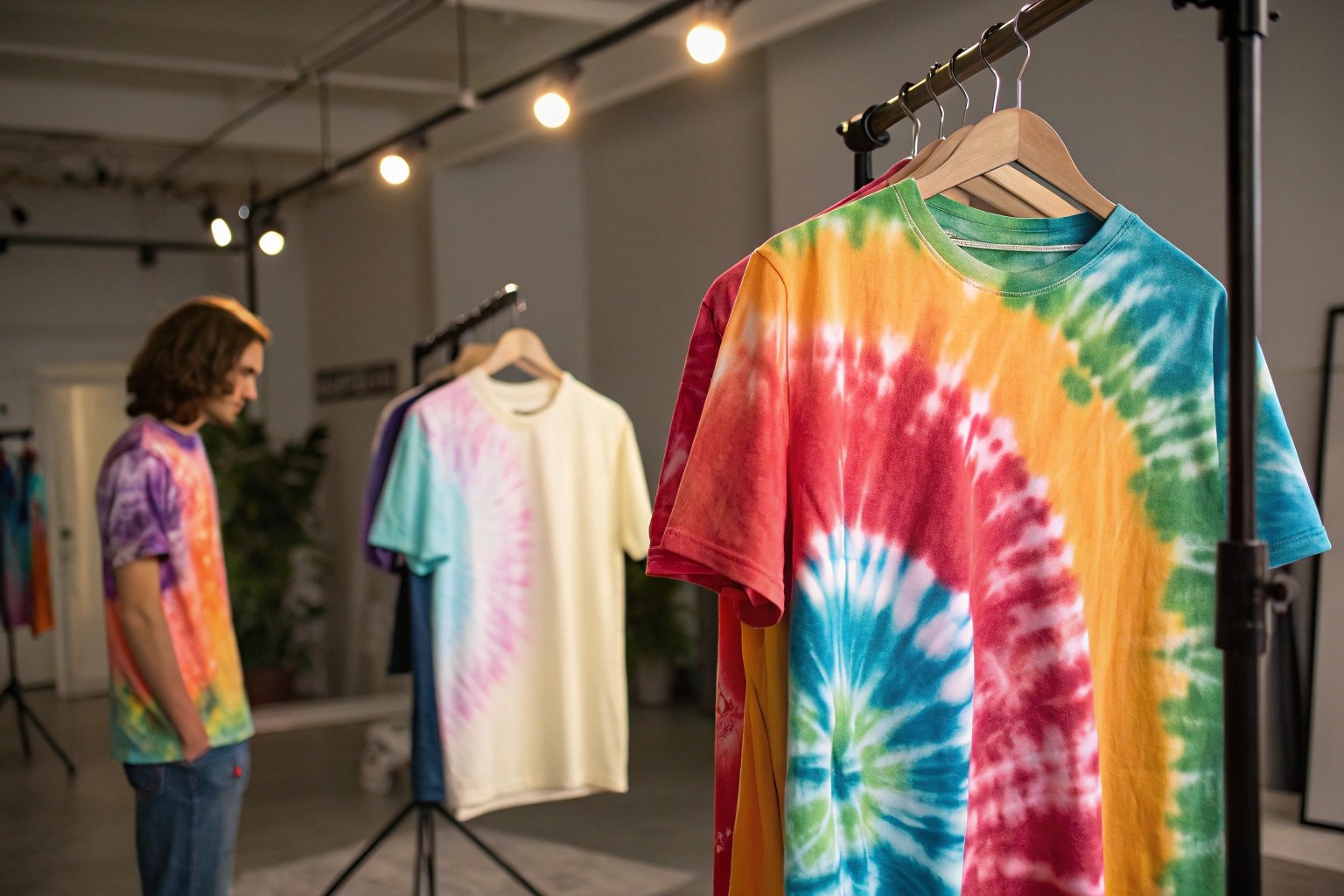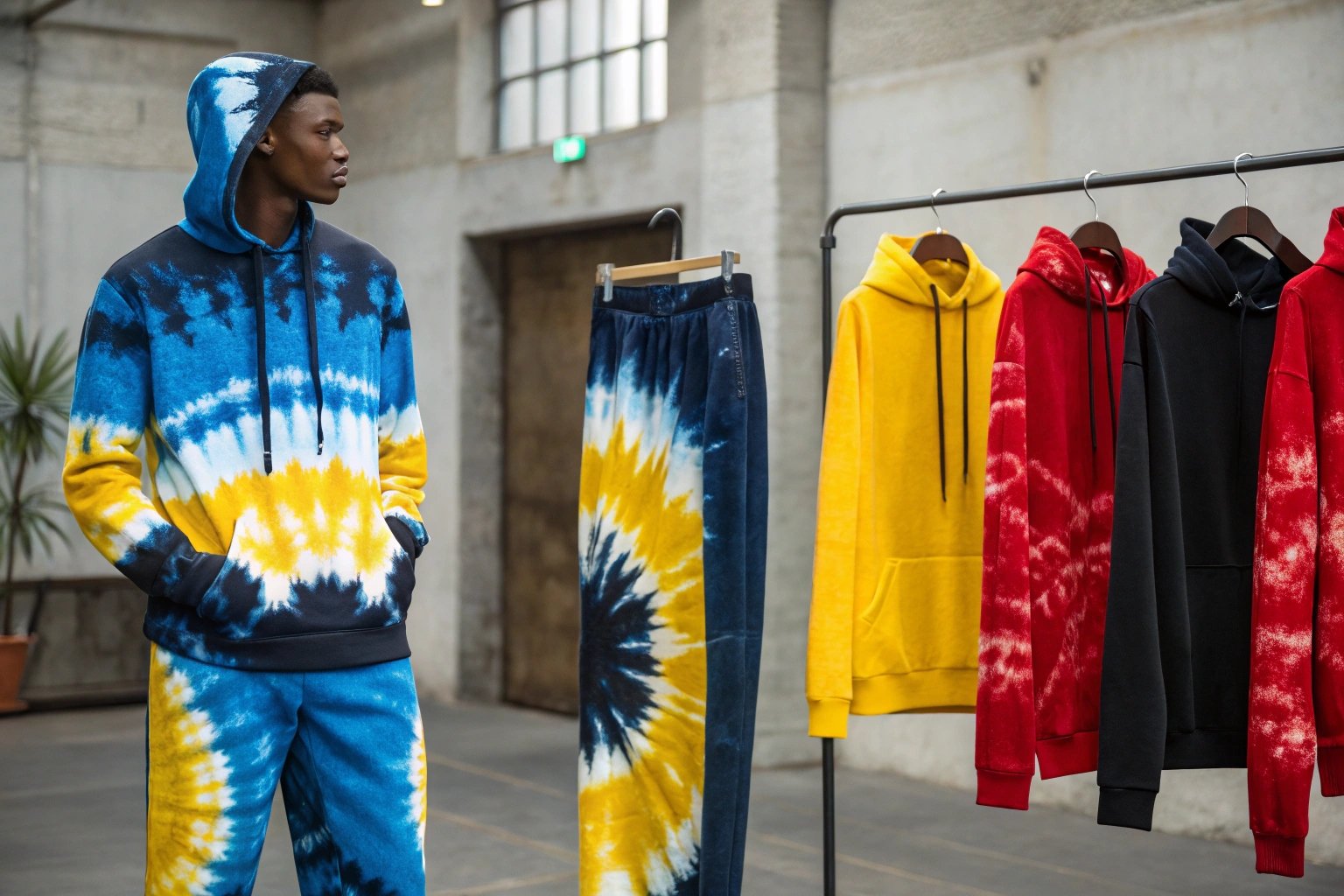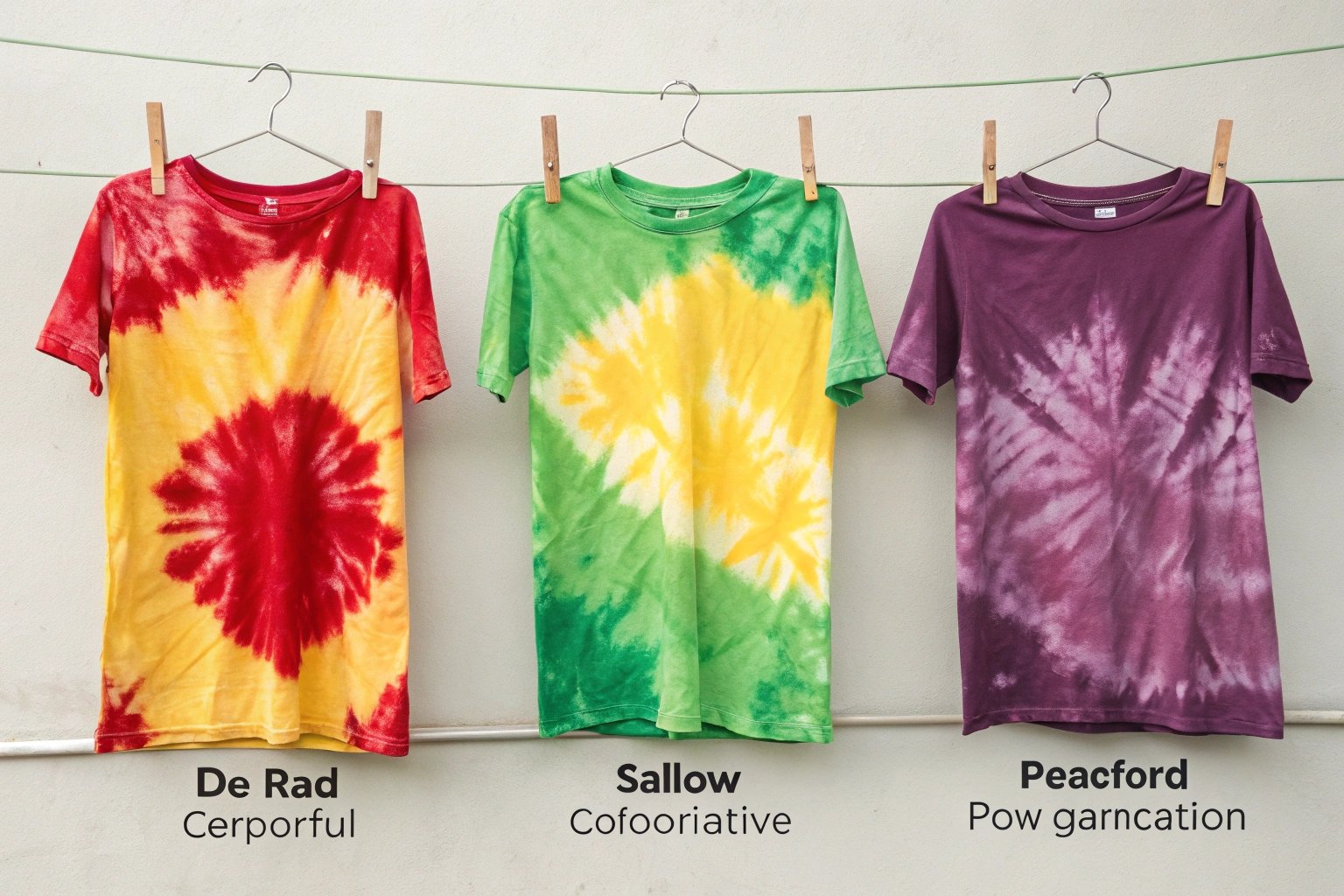Tie-dye is back in full force, and it’s no longer just a nostalgic craft—it’s a popular fashion statement and a method to express individuality. Whether you’re dyeing your clothes for a personal touch or designing a product line, the right color combinations can elevate your tie-dye creations from basic to brilliant.

Choosing the right color combinations for tie-dye can be a delicate balance between boldness and harmony. In this guide, we will explore the best tie-dye color combinations, what works and what doesn’t, and tips for setting the colors in your projects to make them last longer.
What tie-dye colors look best together?
When it comes to tie-dye, selecting colors that complement each other or create the right contrast is essential for an attractive design. Here are some of the best color combinations for a stunning tie-dye effect:

Blue and Green
A classic pairing, blue and green evoke a natural, calming vibe, resembling the ocean and forests. These colors work well together because they are analogous colors (next to each other on the color wheel), creating a smooth, harmonious transition.
Why It’s Great: The soothing tones of blue and green blend effortlessly, giving a peaceful, organic feel to your tie-dye project. Perfect for creating a nature-inspired look.
Red, Yellow, and Orange
For a bold, fiery tie-dye effect, red, yellow, and orange make an excellent choice. These colors are next to each other on the color wheel, which means they blend well and create a warm, vibrant palette.
Why It’s Great: This combination is ideal for making a statement with your tie-dye projects. It’s energetic and fun, especially for items like t-shirts, hoodies, or even accessories.
Purple and Pink
Purple and pink create a soft, yet striking tie-dye design. The cool tones of purple and the warm tones of pink complement each other well, offering a balanced effect with a slightly playful touch.
Why It’s Great: This combination is perfect for feminine designs or for adding a touch of elegance to your tie-dye creations. It’s a great choice for fashion-forward pieces.
Turquoise and Coral
Turquoise and coral create a tropical, summery vibe. The cool, ocean-like turquoise pairs perfectly with the warm, sunset-inspired coral, resulting in a colorful, yet balanced design.
Why It’s Great: Ideal for warm-weather wear or beachy vibes, turquoise and coral will make your tie-dye projects feel fresh and breezy.
Black and White
For a minimalist and modern take on tie-dye, consider using black and white. This monochrome combination creates high contrast and can give a sophisticated or edgy look.
Why It’s Great: Black and white tie-dye is timeless and versatile, making it a great option for anyone looking for a classic, stylish design without the loudness of bright colors.
What colors not to put next to each other in tie-dye?
While tie-dye is all about creativity, some color combinations can result in muddy, undesirable results. Here are a few color pairings to avoid:

Red and Green
Though red and green are complementary colors (opposite each other on the color wheel), putting them next to each other in tie-dye can often result in an unpleasant brown or muddy mix, especially if the dye is applied too heavily or not allowed to set properly.
Why It’s Better to Avoid: These colors can clash and create a murky, unappealing look when they overlap or mix. If you want to use red and green, it’s best to space them out or use less saturated shades.
Blue and Orange
Another pair of complementary colors, blue and orange, may seem like a good match, but they can produce an overwhelming contrast that doesn’t always work well in tie-dye. The intense clash between these hues can result in an unbalanced design if not applied carefully.
Why It’s Better to Avoid: While blue and orange can be striking, they can also cause visual dissonance if used together too closely, leading to a chaotic, jarring look.
Yellow and Purple
Yellow and purple are complementary colors, and while they work well in some designs, tie-dye patterns often don’t benefit from such sharp contrasts. When mixed, yellow and purple can result in an unpleasant brownish or muddy hue.
Why It’s Better to Avoid: Similar to red and green, yellow and purple can combine poorly, especially in smaller designs. If you want to use these colors, try limiting their overlap or using them in separate areas.
What are the best 3 color combinations?
When designing a tie-dye pattern, choosing three colors that work well together can create a dynamic, balanced effect. Here are three of the best 3-color combinations for tie-dye:
Blue, Yellow, and White
This combination evokes a bright and clean vibe, reminiscent of clear skies and sunshine. The blue and yellow contrast nicely with white, offering a fresh, summery feel.
Why It’s Great: Blue, yellow, and white are perfect for a beachy, warm-weather look, ideal for t-shirts, beach towels, and summery accessories.
Red, Orange, and Yellow
For a fiery, vibrant effect, red, orange, and yellow blend beautifully together, creating a warm, energetic tie-dye pattern. These colors flow into each other and evoke the colors of a sunset.
Why It’s Great: Perfect for making bold statements, this combination is ideal for vibrant, eye-catching pieces, like festival wear or casual outfits.
Purple, Pink, and Blue
Purple, pink, and blue create a soft yet striking design. The cool, calm tones of purple and blue are complemented by the playful pink, making for a visually appealing combination.
Why It’s Great: This three-color combo is perfect for creating elegant yet fun tie-dye designs, ideal for fashion-forward pieces or home decor.
Does vinegar help set tie-dye colors?
Yes, vinegar is often used in the tie-dye process to help set the colors and make them more vibrant. Here’s why:
Helps Fix Dye to Fabric
Vinegar, particularly white vinegar, helps the dye bond to the fabric. When the fabric is soaked in a vinegar solution, it helps the dye adhere better and enhances the colors, making them more permanent.
Fixes Vibrancy
Using vinegar can help brighten the tie-dye colors, ensuring they remain vivid and don’t fade too quickly over time.
Why It’s Important: If you want your tie-dye projects to last and retain their brilliant colors, using vinegar can help improve the results and extend the life of the design.
Conclusion
Tie-dye is more than just a fun craft—it’s an art form that allows you to create unique, personalized designs. By understanding color theory and knowing what combinations work well together, you can take your tie-dye projects to the next level.
Whether you’re working with bright, bold hues or subtle, pastel shades, the right color choices can make a significant impact on the final result. Experiment with different combinations and techniques, and most importantly, have fun creating your own one-of-a-kind designs in 2025.

